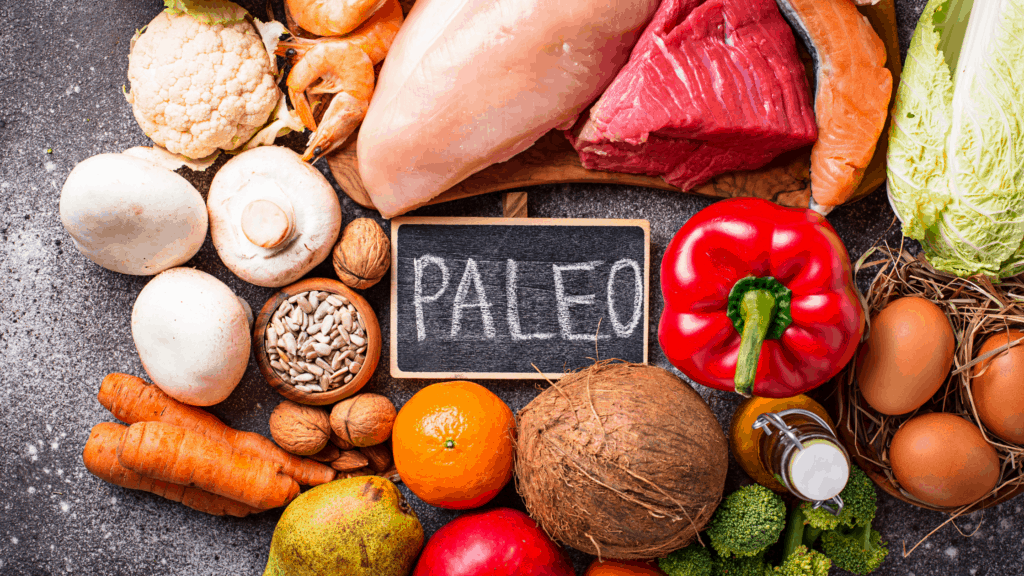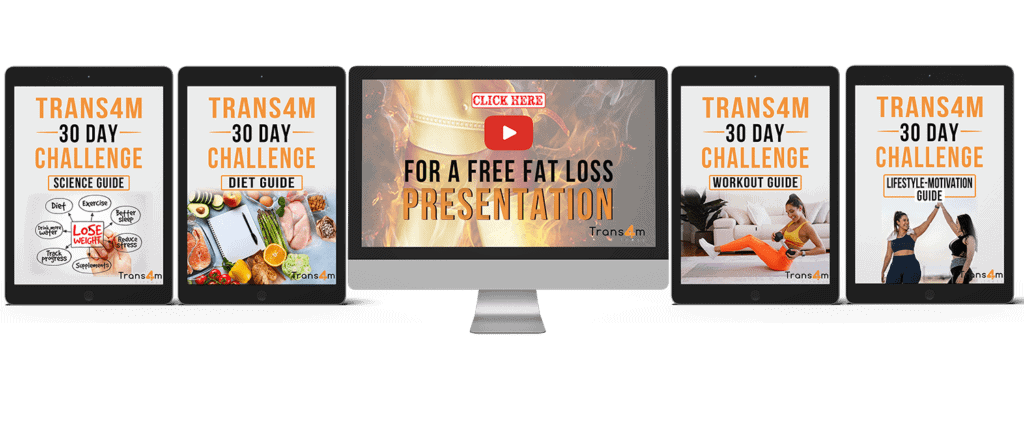
All You Need to Know About the Paleo Diet As a Beginner
Of late, you must have heard about a ton of different kinds of diets. Some are thoroughly researched, while others are nothing but a fad. If you go over different websites and try to look for a diet that suits your goals, it’s easy to get confused. Some people talk about Keto, some others talk about Atkins, while others may have you believe that a Vegan diet is the best, so on and so forth.
Most of the diets are geared towards a certain primary objective. So, it’s best to first identify what your health goals are. If an overall healthy lifestyle and prevention of chronic illnesses are what you aim for, the paleo diet can be of immense help. And it comes with an additional benefit of supporting weight loss if that’s what’s been bothering you.
But what is Paleo? What should you eat and avoid? Is there any room for indulgence? How should you plan your meals? If these are the questions going on in your mind, you’ve come to the right place for the answers. Let’s dive into more details.
The Ways of a Paleolithic Man
Here’s a bit of a recap of the history lessons we had in school. The paleolithic area, which is commonly known as the old stone age, occurred millions of years ago. Men of this age were primarily hunters and gatherers, and they used stones to kill animals for food. They also are believed to gather plant-based foods that appeared in the wild. The use of fire has also been recorded in this era.
What does this all mean? Well, simply put, our paleo ancestors had a diet rich in organic, whole, and wild food sources, which were free of processed add-ons and largely free of gluten and dairy. This does not mean that all paleolithic men ate the same things. The diet varied based on the geography and whatever food was available in that particular region. So, in some parts of the world, they might have had a highly plant-based diet while in other parts they would have relied heavily on meat.
Now, fast forward to the 21st century, the paleo diet has come into the limelight because presumably, eating like our stone-age ancestors used to can help us prevent obesity and other lifestyle illnesses. Ready to take the plunge? Read on to know more about what you should and shouldn’t eat on a paleo diet.
What Should You Eat on Paleo?
Alright, now the basics. Starting with any kind of diet can be confusing if you don’t have a clear list of foods that you can eat and foods that you can’t. Here’s what you can eat. So, maybe print it out and stick a note on your refrigerator, at least in the beginning?
1) Vegetables and Tubers: All vegetables and tubers such as onions, kale, broccoli, carrots, tomatoes, peppers, cabbages, potatoes, turnips, sweet potatoes, yams, and so on are good to go. Just try to source organic and whole vegetables, instead of pre-packaged ones.
2) Fruits: Eat whole fruits such as bananas, apples, oranges, avocadoes, berries, and so on. Avoid fruit slices dipped in sugar.
3) Nuts and Seeds: All nuts and seeds including almonds, walnuts, cashew, hazelnuts, sunflower seeds, chia seeds, and pumpkin seeds are okay.
4) Spices: Stick to basic spices such as turmeric and other herb-based spices. Choose sea salt or rock salt and black pepper for flavoring.
5) Fats: All healthy fats such as olive oil, coconut oil, avocado oil, and so on are good.
6) Meat, Fish, and Seafood: All meat and fish including beef, chicken, lamb, pork, salmon, anchovies, sardines, etc., hold well. Ensure the meat is sourced reliably and is grass-fed as much as possible. Also, the fish is best if wild-caught.
7) Eggs: All eggs are fine but it’s best to eat free-range and pastured ones.
The “No-No” List
Now comes the hardest part of any diet, which is, the things that you have to leave out. Some of the items on this list may be difficult to cut out, but remember, you’re doing the diet for a healthier you. Here’s the list of foods you must steer clear of.
1) Gluten and Dairy: Avoid all forms of grains including wheat, corn, barley, rye, and their preparations such as bread, noodles, and pasta. Some experts believe rice is fine on paleo. Dairy is off-limits as well, though some specialists say grass-fed butter should be fine.
2) Legumes: Say goodbye to all kinds of beans and lentils as they are not paleo.
3) Oils and Trans fats: Vegetable oils such as canola oil, soybean oil, sunflower oil, cottonseed oil, and so on. Avoid any food that contains trans fats, e.g., margarine.
4) Sugar: This is a big one and challenging for most people to give up. But processed sugar and high-fructose corn syrup must go out of your kitchen if you follow paleo.
5) Everything processed: Read ingredients when you buy any packaged food. If the label mentions any form of additives or preservatives, then it’s not paleo.
Room for Adaptations and Indulgences
 Apart from the occasional grass-fed butter and rice, which are part of an adapted version of paleo, there are some other food items that you may cut yourself some slack for. Craving a glass of red wine on your dinner date at home? No worries, go right ahead. Red wine is rich in antioxidants and is beneficial. But do not overdo it as excessive alcohol is harmful regardless of whether you are paleo.
Apart from the occasional grass-fed butter and rice, which are part of an adapted version of paleo, there are some other food items that you may cut yourself some slack for. Craving a glass of red wine on your dinner date at home? No worries, go right ahead. Red wine is rich in antioxidants and is beneficial. But do not overdo it as excessive alcohol is harmful regardless of whether you are paleo.
Another item that your mind is probably hovering around is chocolate. Yes, the love for chocolate is real. And the good news is, you don’t have to completely give it up when on paleo. Just ensure you eat chocolate that has a cocoa content of at least 70%. And remember the golden rule, do not overdo the foods that are meant for a once-in-a-while indulgence.
Are Beverages Okay?
Ah! The freshness of the cup of coffee in the morning. If you cannot start your day without this aromatic beverage and are wondering whether the paleolithic man had them, well, the answer is a bit on your side. Coffee is not paleo but most people who follow paleo do fine with it. So now, you can breathe easily. Your mornings are sorted.
What about tea? Tea-lovers can rejoice, too. This beverage is high in antioxidants and has multiple other benefits. So, go right ahead and steam some leaves. Herbal teas are even better.
All other beverages including soft drinks, artificially sweetened fruit juices, and even sports drinks are out. If you are thirsty and want something cool, water is your best bet. A glass of cold coffee or iced tea should be fine as well.
Your Paleo Meal Plan for a Week
So, now you know what you can and cannot eat. But wait, with so many restrictions, isn’t meal preparation more challenging? It might feel so at first, but if you have a weekly meal plan at the ready, you should be able to breeze through your kitchen chores. Here’s a sample paleo menu for a week. Feel free to modify as per your palate and access to ingredients.
Monday: Start your week with some stir-fried veggies with coconut oil, fruits, and eggs in the morning. A quick chicken salad dressed with olive oil makes a delicious Monday lunch. For dinner, some more veggies on the side of a burger without the bun sounds yummy.
Tuesday: Treat yourself to bacon and eggs for breakfast, and add some fruits. Some steamed veggies and leftover burgers could be a filling lunch. Dinner is made simple with salmon tossed in grass-fed butter and stir-fried veggies on the side.
Wednesday: It’s the middle of the week and you’re in no mood to cook extravagantly. You can simply heat the leftover dinner and make it into a sumptuous breakfast. A quick chicken sandwich wrapped in lettuce leaf makes your lunch. And for dinner, whip up some minced meat with some fruits and veggies.
Thursday: Bring eggs back into your breakfast palate, with fruits on the side. For lunch, you could simply have your leftovers from Wednesday’s dinner, and add some nuts to it. And how does pork sound for dinner? Yummy? Well, don’t forget to add some steamed vegetables as a side dish.
Friday: It’s been 5 days, so no harm in repeating some of the items you had on Monday, right? So, why not have some eggs and stir-fried veggies for breakfast and feast on a chicken salad for lunch? And as you prepare for the weekend, treat yourself to some steak with boiled sweet potatoes for dinner. Of course, some veggies are a must.
Saturday: Have a leisurely Saturday breakfast with bacon and eggs, and a piece of fruit. Lunch can easily be leftovers of the wonderful steak you cooked last night, along with some veggies. Saturday night! Bake some succulent salmon with vegetables.
Sunday: No one likes to cook on a Sunday, especially for breakfast. So, leftovers from the night before should be good enough to fill you up on a Sunday morning. For lunch, you could try out some meat and veggies wrapped in lettuce or spinach leaves. And if you are in the mood for a bit of cooking, grill some chicken and feast on it with some tomato-based sauce for dinner. But remember, no preservatives.
And that’s about it! Didn’t I tell you meal preparation was no big deal with paleo? Go ahead and try your combinations of protein, carbs, and veggies. Mix and match so you’re never bored.
Snacking Ideas
The meal plan is great! But what do you do if you’re hungry in between? Are there any paleo-approved snacks? The answer is “yes”. There are plenty of foods you can snack on to satiate bits of hunger pangs.
Fruits and nuts are the easiest as they require no preparation. Another simple snack involves baby carrots. Eggs are also an option if you have the time to prepare them. For those who need to snack outside, you can prepare some beef jerky beforehand and carry them wherever you go.
For leisurely snacking options, you could try dipping apples and bananas in coconut cream or almond butter. Coconut yogurt is also a great option.
What Your Grocery Bag Should Contain
When starting with a paleo diet, the first thing you must do is stock up your pantry with paleo-friendly ingredients. It also means you need to get rid of junk (yes, junk!) such as chips, soft drinks, processed foods, dairy, bread, and so on.
Once inside the supermarket, ignore the tempting aisles that you probably frequented earlier, and stick to the whole foods sections. A few of the things that should be your kitchen staples include meat, fish, chicken, vegetables, sweet potatoes, fruits, eggs, nuts, olive oil, coconut oil, almond butter, and seasonings such as pepper turmeric, and herbs. You’d be surprised at how many different kinds of delectable dishes you can whip up with these wonderfully healthy ingredients.
Eating Out
You’re now probably wondering, with so many restrictions will I ever be able to eat out? It certainly isn’t as easy to eat out as it would be if you ate everything, but with a few modifications to your order, eating out shouldn’t be impossible.
You may need to call the restaurant beforehand and request them to cook your food in olive oil or coconut oil. And when you get there, order some salad, some steamed veggies, and a meat-based or fish-based dish. Omit all the grains. Many restaurants would be happy to accommodate your special dietary needs.
Your Health Comes First
The paleo diet is an excellent way to gear up towards healthy living. The idea is to eat as our stone-age ancestors did. Eliminate processed food, gluten, and dairy, and eat whole foods cooked in healthy fats.
The best part of this diet is that you don’t need to count calories. Your health should automatically fall in line when you’ve religiously followed the diet for some time. Once your overall health improves, your weight shouldn’t be a challenge anymore (if that’s your concern).
Have a meal plan handy and a grocery list in your bag when you go shopping. Make the transition easy by continuing to eat out with a modified menu and have fun with friends and family. Better yet, ask them to follow paleo alongside you for a healthier generation.
You can check out our diet guides here.
Mediterranean Diet
Paleo Diet
Keto Diet
Trans4m Diet
And more coming soon
Recent Posts
How To Reverse Fatty Liver Disease Through Diet (7 Day Sample Diet)!
Is A Fatty Liver Reversible? Fatty Liver Diet Plan and Menu Here we tell you everything you need to know about the fatty liver diet, menu, recipes, tips, and tricks. Did you just get diagnosed...
How to lose weight for teenage girls. A complete guide with tips
Lose weight and surprise your friends with your transformation. Follow our exclusive weight loss tips, healthy diet, and workout routine for teenage girls-all backed by science and recommended by...


